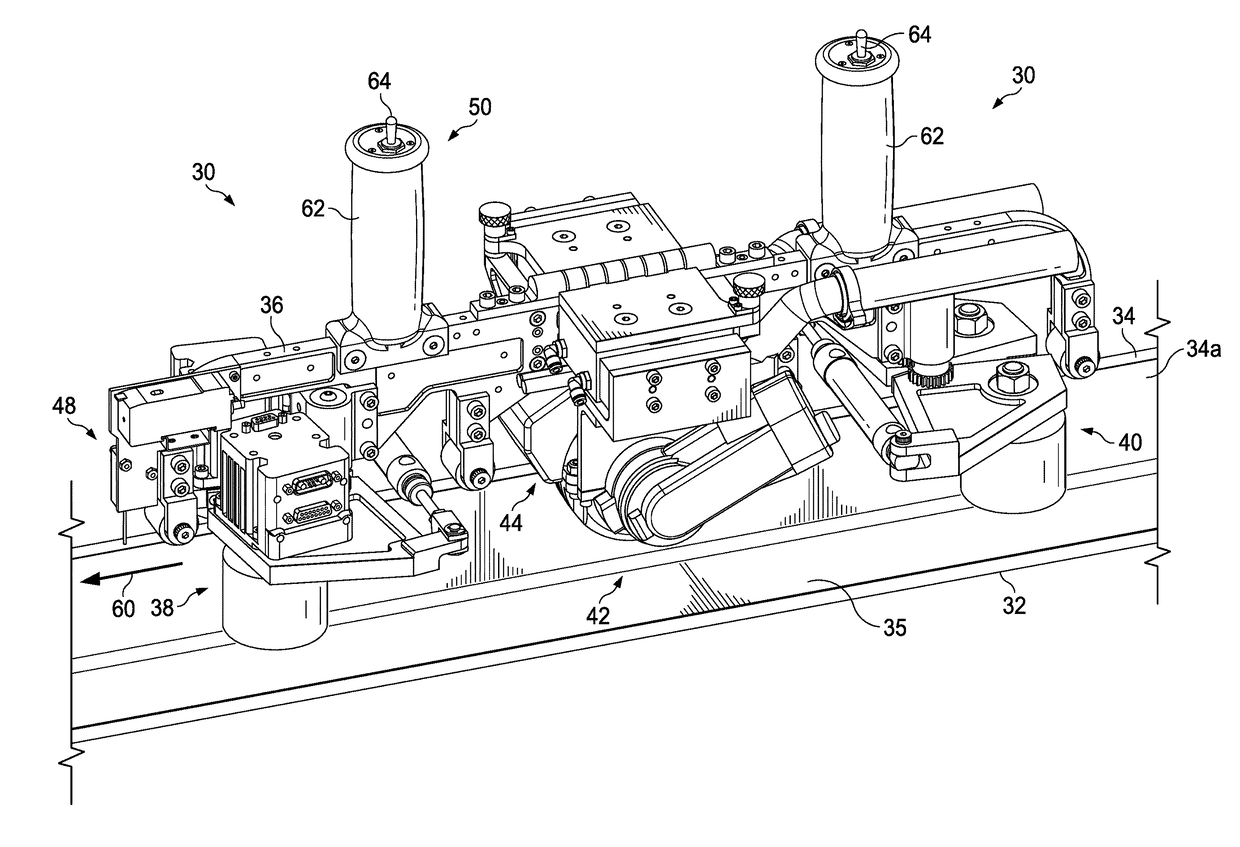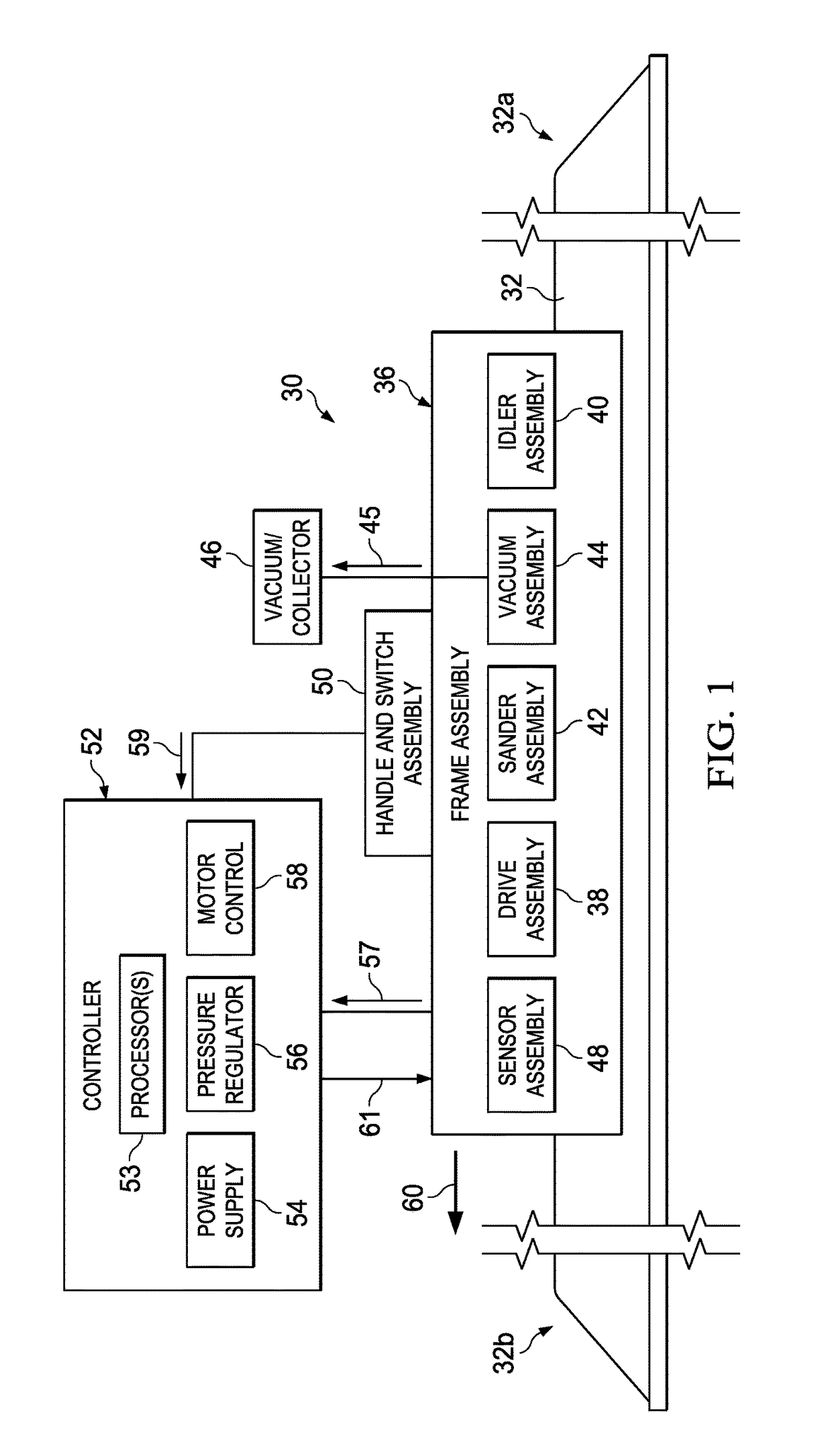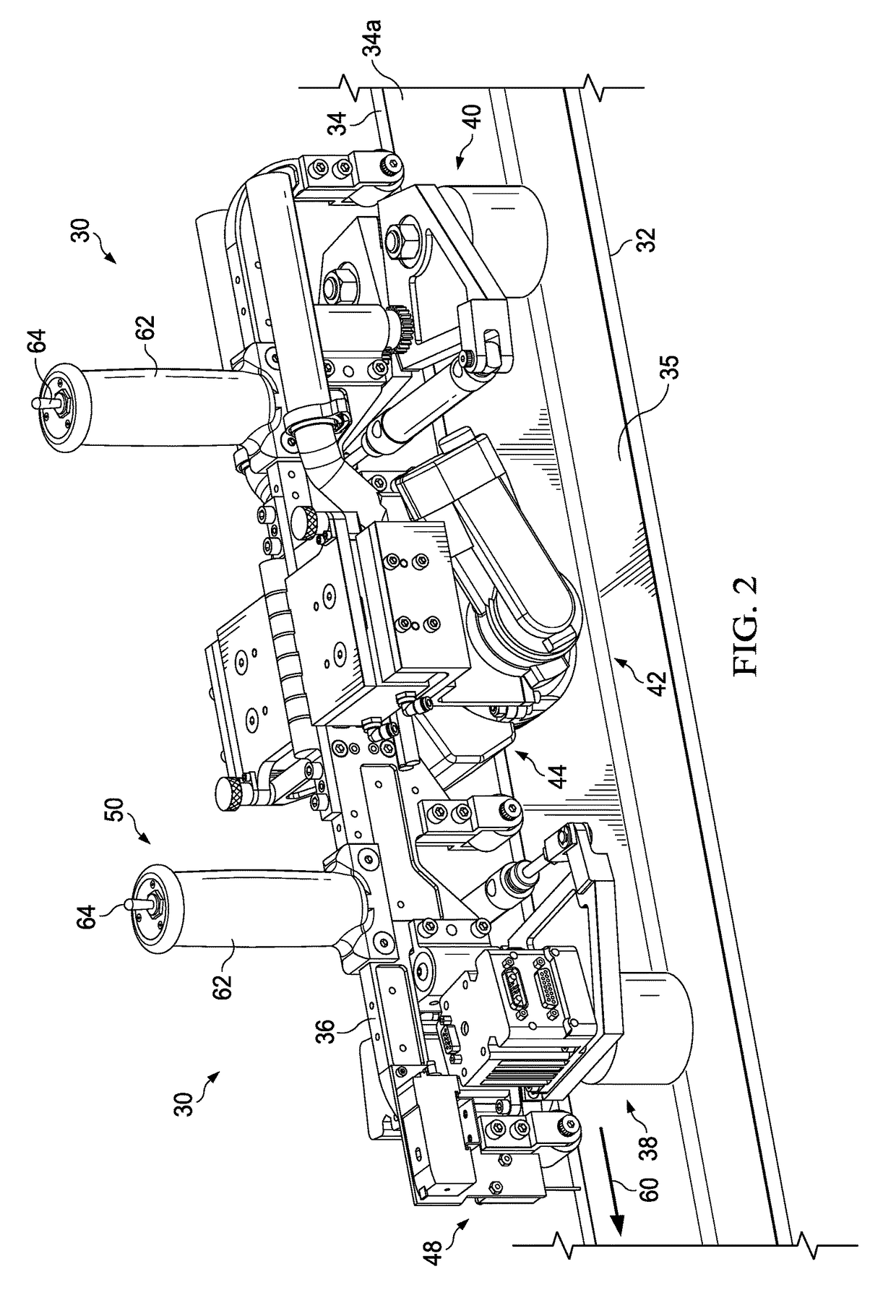Method and Automated Rover Device for Surface Treatment
a surface treatment and rover technology, applied in the direction of grinding machines, grinding/polishing apparatuses, manufacturing tools, etc., can solve the problems of time-consuming and labor-intensive hand sanding, and achieve the reduction of part-to-part variation, the effect of substantially reducing the amount of time required to sand the surface of a composite stiffener and substantially reducing the labor required
- Summary
- Abstract
- Description
- Claims
- Application Information
AI Technical Summary
Benefits of technology
Problems solved by technology
Method used
Image
Examples
Embodiment Construction
[0037]Referring first to FIGS. 1, 2 and 3, an automated rover device 30 is adapted to treat opposite surfaces 34a of a part 32. In one application, the rover device 30 may be used to remove material 45 from a part 32 as by sanding surfaces of the part 32. In the illustrated example, the part 32 comprises a composite laminate stiffener 32 in the form of a blade stringer 32 having flanges 35 (see FIG. 3) and a blade 34. However the rover device 30 may be utilized to remove material from surfaces of a wide range of other types of parts having various geometries. As will be discussed below in more detail, the rover device 30 is placed on the part 32 (also sometimes referred to herein as a stiffener 32 or stringer 32) and moves 60 (FIG. 1) along the length of the part 32 from one end 32a of the part 32 to the opposite end 32b while performing treatment of the surfaces of the part 32. In the illustrated example, the rover device 30 removes a pre-calibrated amount of material from the surf...
PUM
| Property | Measurement | Unit |
|---|---|---|
| Length | aaaaa | aaaaa |
| Flexibility | aaaaa | aaaaa |
Abstract
Description
Claims
Application Information
 Login to View More
Login to View More - R&D
- Intellectual Property
- Life Sciences
- Materials
- Tech Scout
- Unparalleled Data Quality
- Higher Quality Content
- 60% Fewer Hallucinations
Browse by: Latest US Patents, China's latest patents, Technical Efficacy Thesaurus, Application Domain, Technology Topic, Popular Technical Reports.
© 2025 PatSnap. All rights reserved.Legal|Privacy policy|Modern Slavery Act Transparency Statement|Sitemap|About US| Contact US: help@patsnap.com



